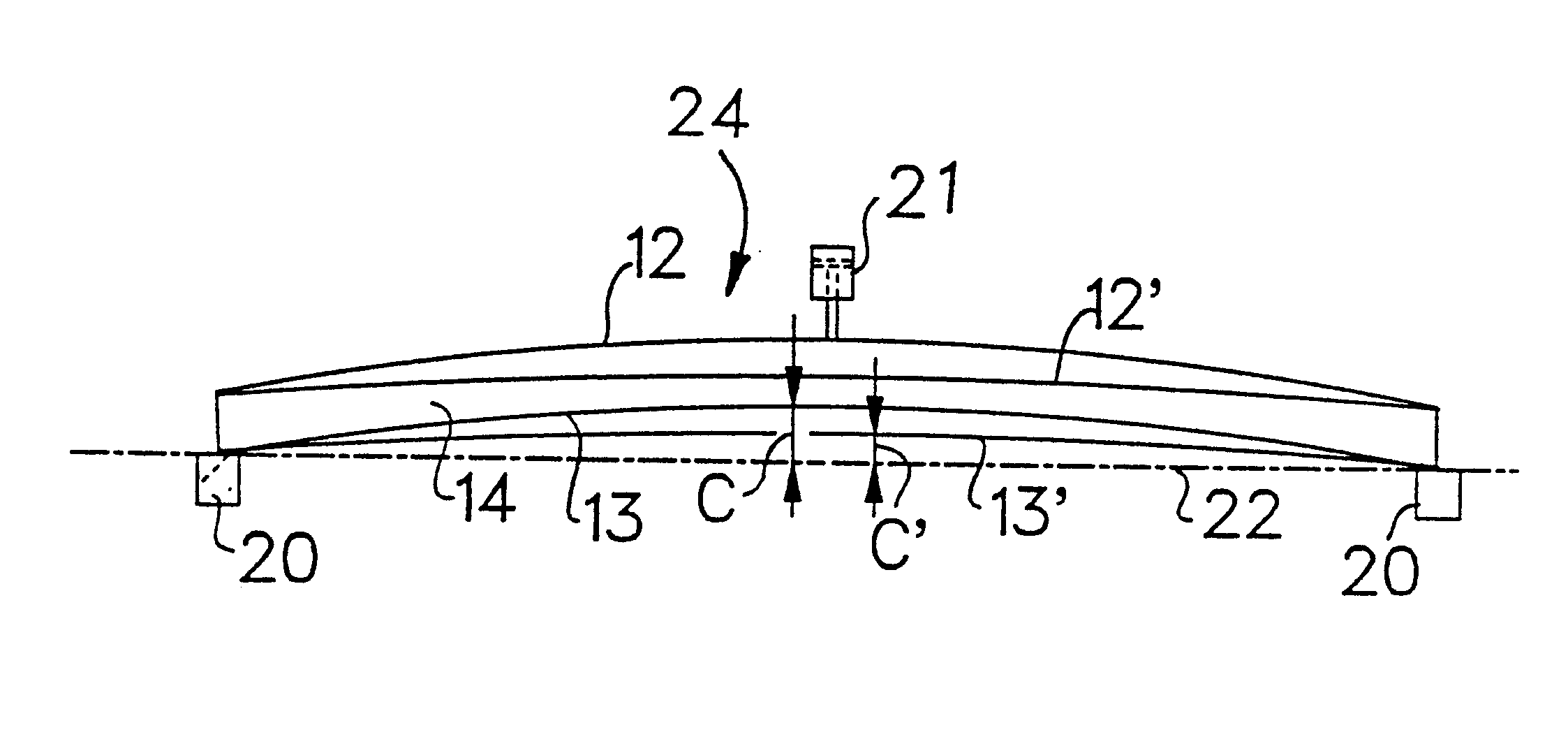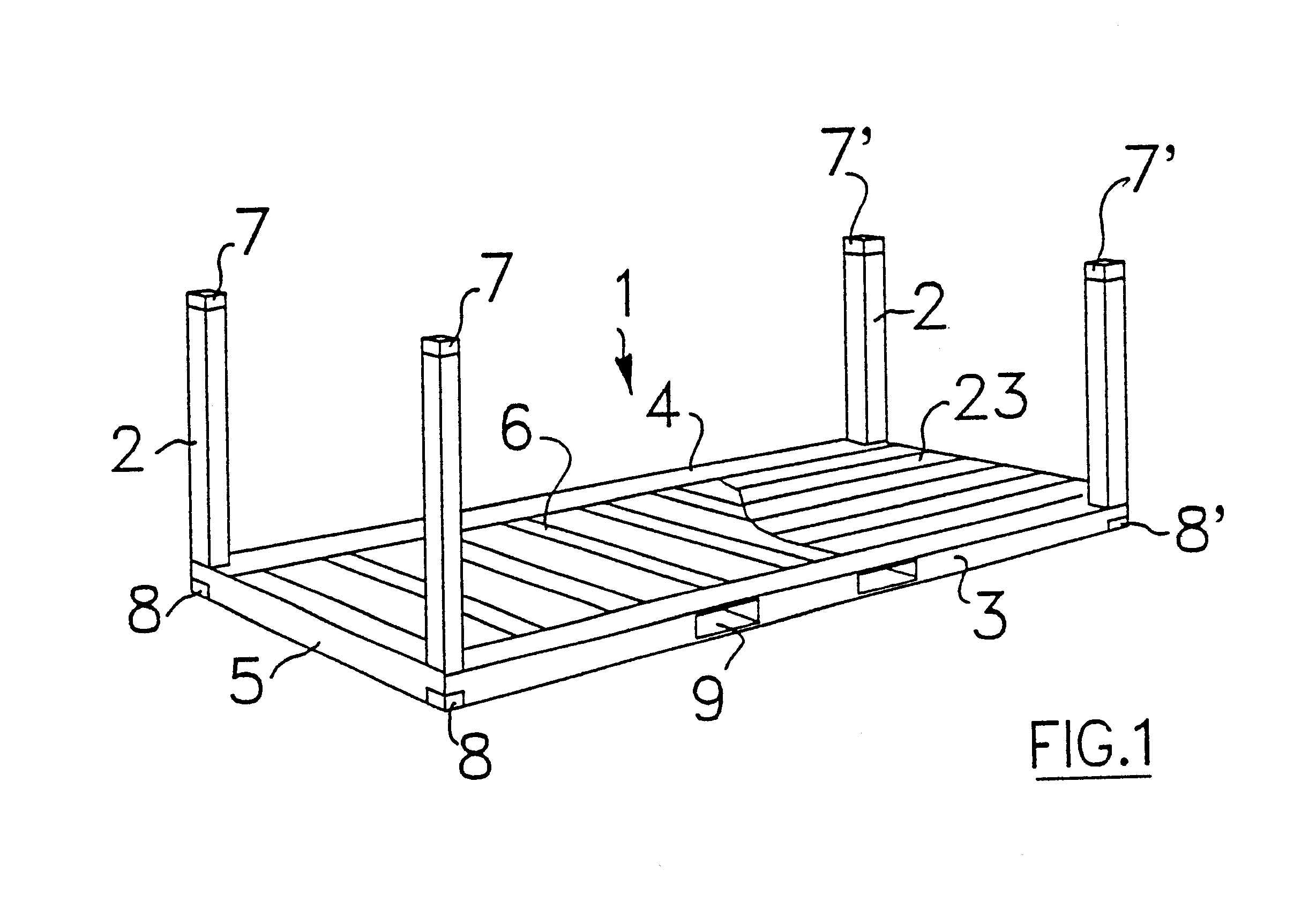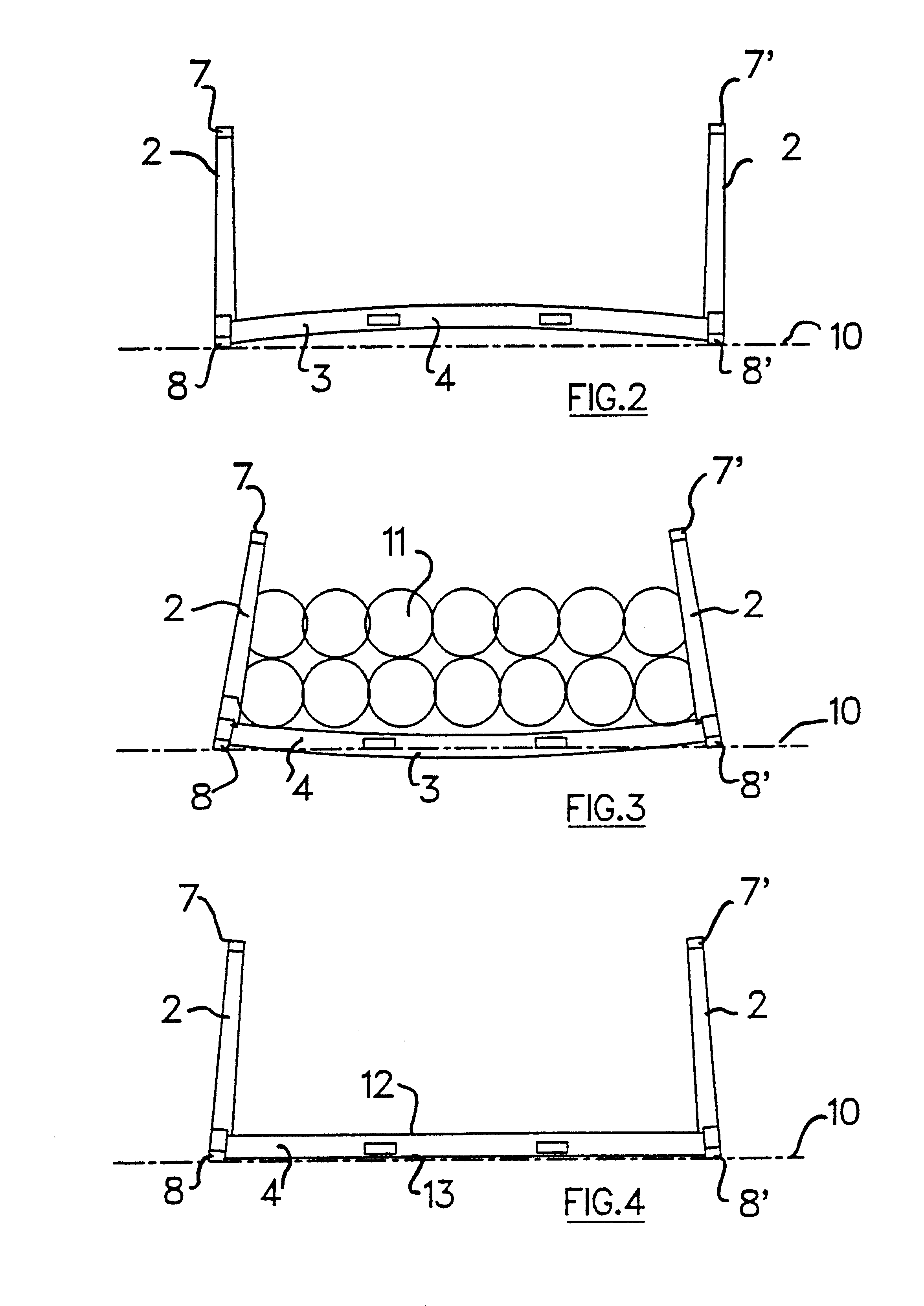Containers
a technology for containers and containers, applied in the field of containers, can solve the problems of accumulating residual stresses in beams, reducing the weight of steel, and inability to deformation,
- Summary
- Abstract
- Description
- Claims
- Application Information
AI Technical Summary
Problems solved by technology
Method used
Image
Examples
Embodiment Construction
In FIG. 1 there is seen a typical platform-based container or flatrack 1 with corner posts 2 fixed in the erect position. There is a rectangular platform base 3 comprising a framework of longitudinal beams 4, one on each side, transverse end rails 5 and floor bearers 6. Floor timber 23 is fitted over the bearers 6 and cargo (not shown) laid on top of the timber 23 for carriage of the cargo.
At the top of the posts 2 are corner fittings 7, 7' and at the bottom fittings 8, 8' which are commonly located in a standardised geometric relationship to one another to enable standardised handling devices and other like containers to be connected to the fittings 7, 7', 8, 8'. Passing through the base 3 are tunnels 9 into which the tines of fork lift trucks can pass to lift the flatrack 1.
FIG. 2 shows a side elevation of flatrack 1. a dotted line 10 is shown to represent a surface which might be the ground, or the bed of a transport vehicle or the roof of another container. The fittings 8, 8' re...
PUM
| Property | Measurement | Unit |
|---|---|---|
| Deformation enthalpy | aaaaa | aaaaa |
| Residual stress | aaaaa | aaaaa |
Abstract
Description
Claims
Application Information
 Login to View More
Login to View More - R&D
- Intellectual Property
- Life Sciences
- Materials
- Tech Scout
- Unparalleled Data Quality
- Higher Quality Content
- 60% Fewer Hallucinations
Browse by: Latest US Patents, China's latest patents, Technical Efficacy Thesaurus, Application Domain, Technology Topic, Popular Technical Reports.
© 2025 PatSnap. All rights reserved.Legal|Privacy policy|Modern Slavery Act Transparency Statement|Sitemap|About US| Contact US: help@patsnap.com



